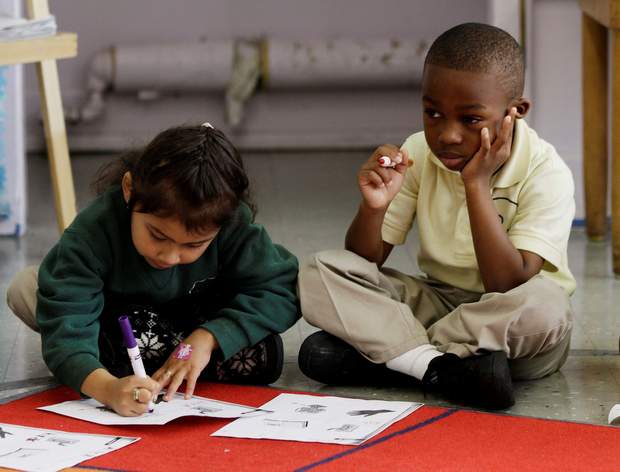You can get away with a lot when you’re writing about the country’s public schools. To say schools are in a crisis, or that the state of public education is on a precipitous decline, requires no substantiation. We simply all know by nowthat our schools are a mess.
So it was no surprise to read this opening paragraph in the new issue of Newsweek:
It’s no secret that when it comes to education, America gets a D-minus. In the most recent global tests—scored on a 1,000-point scale—the US scored a 481 in math, 497 in science, and 498 in reading comprehension. In comparison, international averages were 494, 501, and 496, and the US lags well behind the world’s leaders, a list which includes some of the usual suspects like China, Japan and the Netherlands, but also has Latvia, Slovenia and Vietnam.
The evidence here is the latest round of international testing, called the Program for International Student Assessment (PISA).
| Newsweek says American kids get a D-minus. But do the numbers add up? |
Before we go any further, it’s worth pointing out that there’s no reason to take these results as evidence of US decline. As Valerie Strauss of the Washington Post education blog “Answer Sheet” pointed out, US students have never scored near the top. And there are plenty of reasons to doubt the conventional story that says American kids don’t measure up when it comes to these international tests.
But hold on. Newsweek‘s writer, Chris Weller, is saying that schools get a grade of D-minus for performance that is … average, basically. (In science and reading, in fact, PISA says the US performance is “not measurably different” from the OECD average.) Unless the grading curve has changed dramatically since I last checked, that’s not a D-minus.
But math doesn’t matter, since Weller’s point is so obvious: “Why is the world’s largest economy so bad at teaching its children?”
Well, maybe it’s actually not that bad at teaching its children. But to suggest that would be heresy.
Weller’s main point is that there is a “growing school of thought” that US schools are specifically cheating gifted students, and that might have something to do with that D-minus grade. He calls gifted children “the tiny group smarter than 99.99 percent of their peers.” That would be one student out of 10,000, which would mean you would need a student body of roughly 200,000 to fill one classroom with gifted students.
Other estimates more reasonably suggest they are about 6 percent of the student population. But in either case, how would lavishing more attention on a tiny slice of the student population do much to raise American students out of their D-minus doldrums?
It doesn’t add up. But remember, it’s American kids who are lousy at math.
Peter Hart is the activism director of Fairness & Accuracy in Reporting. He wrote this for FAIR’s blog.



0 Comments